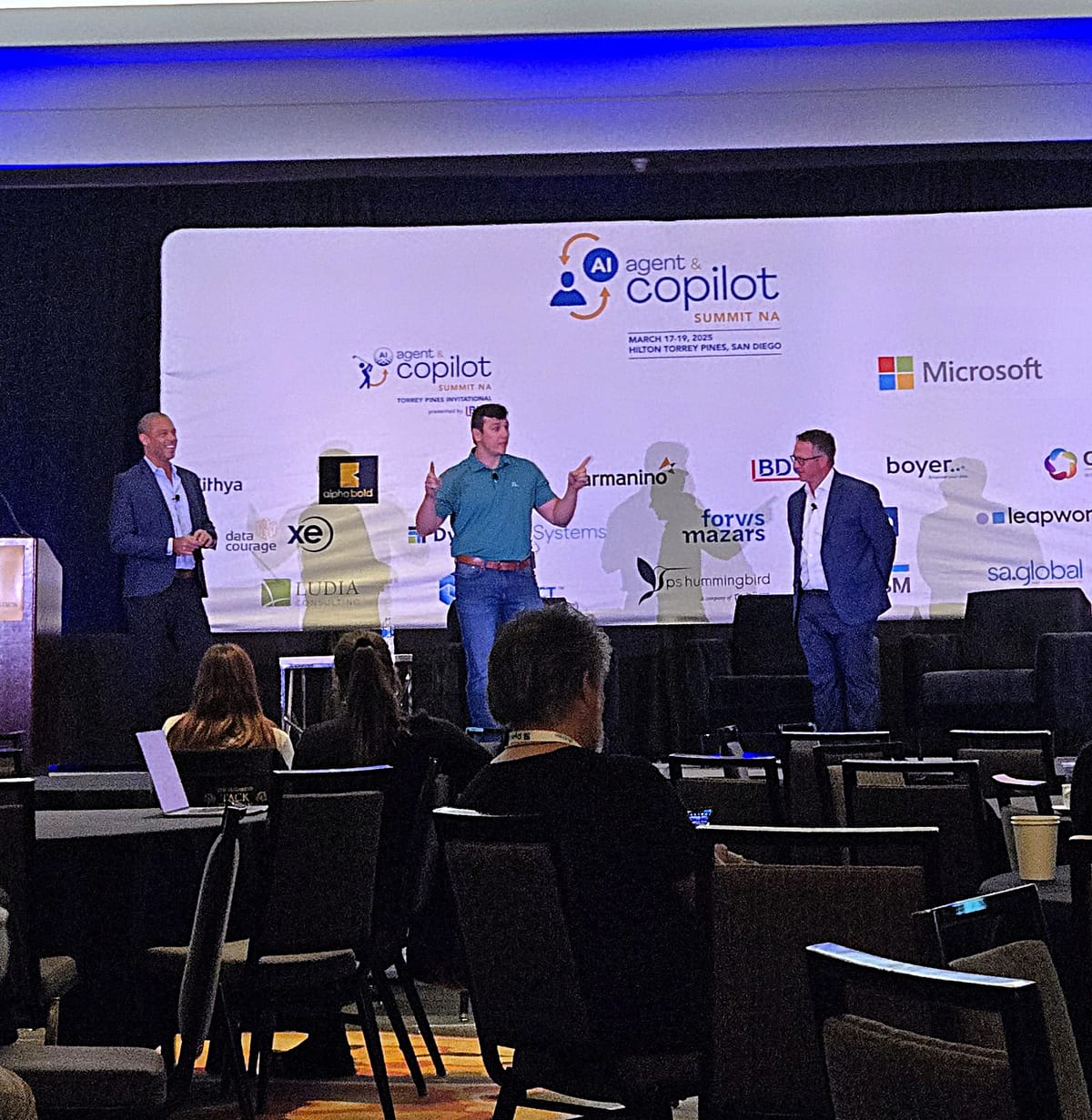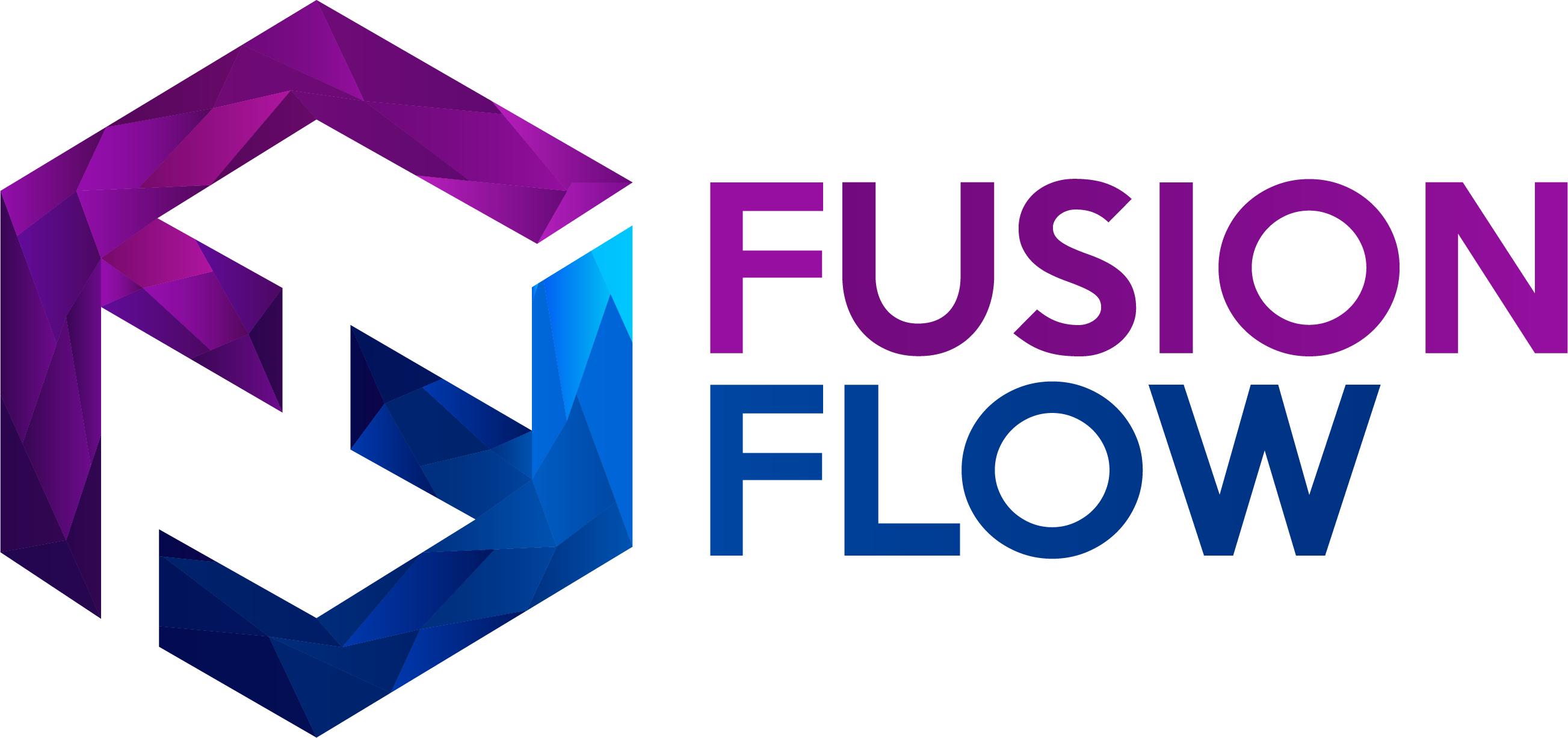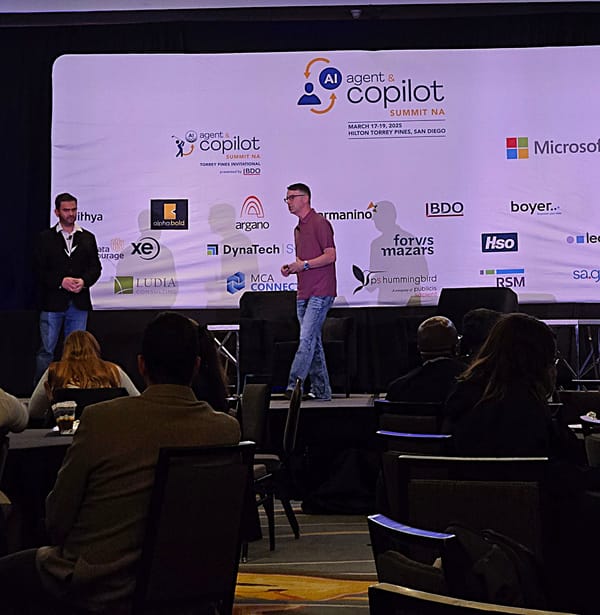Co-Creating Copilots with Purpose: Why Blue Collar AI Adoption Is the Real Enterprise Test
Vixxo's AI copilot, Vita, began with a technician, not IT. Built for the field, it speeds up manual access, improves fix rates, and lowers costs. Success came by starting small, proving value, and earning trust through real use. AI must deliver where it counts.

90% of enterprise AI projects never make it to production. One story broke the mold at the AI Agent & Copilot Summit NA 2025.
This case focuses on AI in the field – technicians, tools, machines – and its functionality.
Vixxo, a national facility service provider, built an AI copilot called Vita. It began with a technician in Seattle experimenting with ChatGPT after hours.
"The concept of Vita was born from a technician. I didn't think of it. It wasn't some IT guy," said Jim, the exec leading the initiative.
Here's what enterprises can learn from what Vixxo did right and what they're still working on.
2. Blue Collar Adoption Needs Different Rules
White-collar AI is about augmentation. For field technicians, it's about utility.
"These aren't digital natives. They take pride in knowing how to fix things. AI has to earn trust."
One mistake and "I'm never coming back to that tool" is the sentiment.
Vixxo tackled it by shadowing techs, identifying common pain points (like part pinouts), and tuning their AI over 40 iterations.
They also realized not everyone needs the same UI. "Some techs want 120 steps. Some just need the pinout diagram."
3. Build for ROI and Then Expand
Vita is structured around 4 phases. However, only phase one was pitched for funding.
"We said: fund phase one. Let us prove it before we ask for more."
Instead of a top-down vision, they built from technician input, then tied benefits to board-level metrics: time on site, first-time fix rate, and downtime avoided.
And yes, they cut the budget while increasing the impact.
"We saved half a million dollars by pivoting from custom Python to IT-managed solutions."
4. Measure Outcomes, Not Just Outputs
"Outcomes are better than outputs," Jim repeated. Here's how they're measuring:
| Metric | What It Tracks |
|---|---|
| First-time fix rate | Are techs solving issues on the first visit? |
| Time on site | How long does each repair take? |
| Technician proficiency | Speed of onboarding and independent work |
| Usage rate | Are techs choosing to use the copilot? |
They're also integrating AI insights into operations, such as predicting which part is likely to fail and who has it on their truck.
5. Culture and Change Still Decide Success
Tech alone doesn't scale. Change management matters more.
"You need to communicate. You need to work with people. Innovation moves fast – you need to move faster."
Vixxo trained advocates, supported skeptics, and made it personal.
Summary notes from work orders were modernized for facility managers, condensing everything from "It's fixed" to "a dissertation" into clear customer updates.
What's Next?
Vixxo is experimenting with Copilot Studio, citizen developers, and leveraging 20+ years of repair data to build a standard repair catalog, but they're not rushing.
They've learned to balance vision with measurable value.
"You can apply this to any tech rollout," Jim said. "Focus on a real use case. Measure the outcome. Keep it relevant."
And if you're pitching AI to your board?
"Our chairman told me: I'll invest in AI as long as I don't lose money. We had to sell the dream – but now we show the return."
The bottom line is that your AI isn't real if it isn't in production. And if it doesn't work for your most skeptical users, it won't last. Build for adoption, not just headlines.





